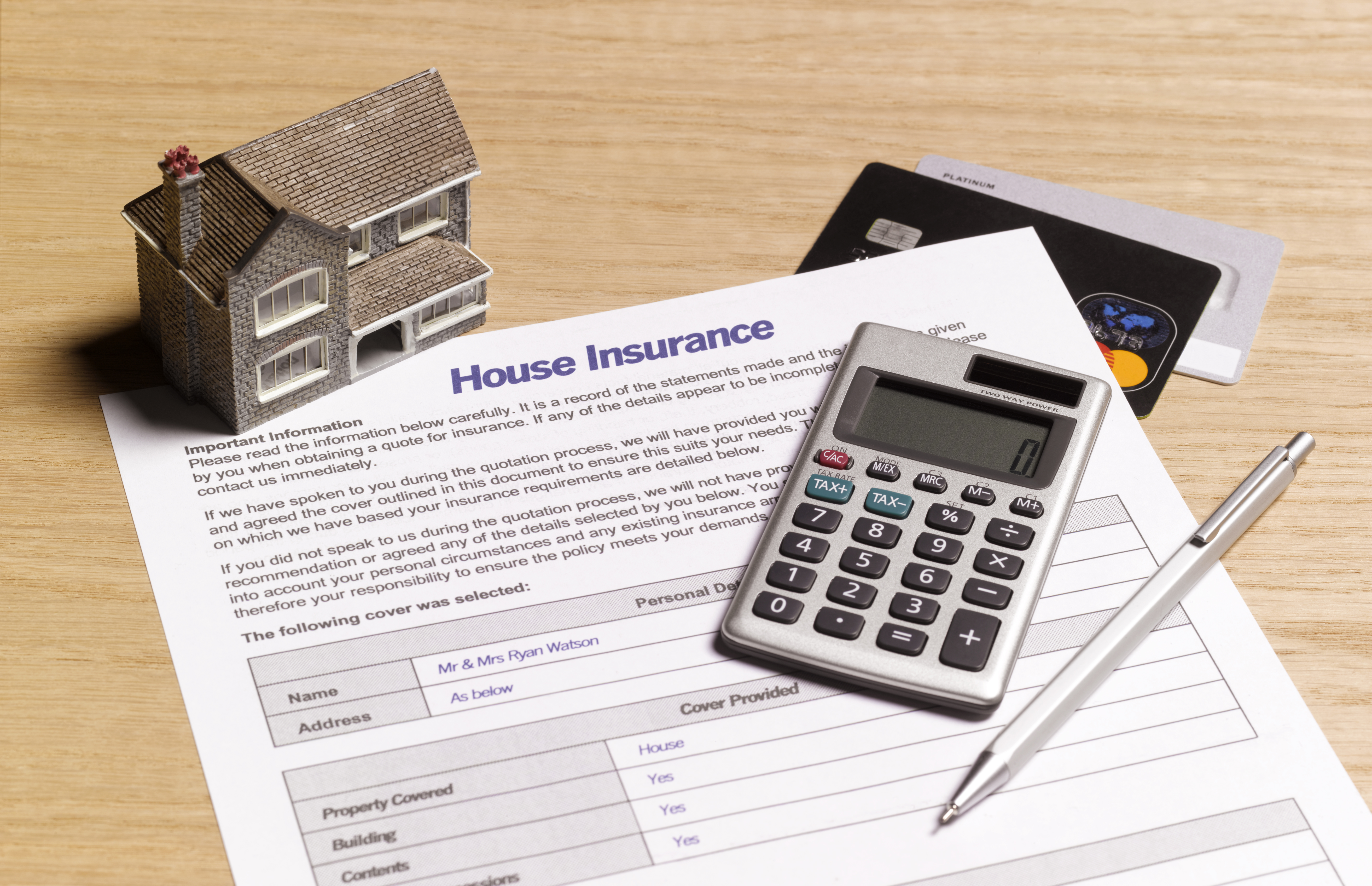How to cut the cost of home insurance
Home insurance policies are becoming increasingly expensive, but there are several ways you can keep costs down

Daniel Hilton

The most valuable asset that most people own is their home. The average cost of a house in July 2024 was £271,619 according to Nationwide, and house prices are continuing to rise.
With so much of your wealth likely tied to your property, finding the right home insurance is vital so that you can protect it.
Average home insurance premiums have plummeted in the last 12 months, with the average quote being 7.9% lower in June 2025 than it was 12 months ago and 3.9% lower than three months ago, according to Consumer Intelligence.
MoneyWeek
Subscribe to MoneyWeek today and get your first six magazine issues absolutely FREE

Sign up to Money Morning
Don't miss the latest investment and personal finances news, market analysis, plus money-saving tips with our free twice-daily newsletter
Don't miss the latest investment and personal finances news, market analysis, plus money-saving tips with our free twice-daily newsletter
The most commonly quoted premium is now between £150 and £199, while 62.5% of consumers are able to source quotes for less than £200 as increased competition in the market is providing consumers with better value.
The falling average cost is thanks to a reduction in price of combined policies as well as a significant price fall in the contents-only market, according to Laura Vas, senior insight analyst at Consumer Intelligence.
However, despite the cost of home insurance being lower today than last year, premiums have increased by 54.2% since 2014, rising far faster than inflation.
The good news is there are still some further steps you can take to trim your home insurance premiums without compromising on your cover. We explain what they are.
We look at how to ensure you’ve got valid home insurance in a separate piece.
How to cut home insurance costs
1. Combine your home insurance policies
Instead of buying separate buildings and contents cover, a simple option is to combine your policies, as most insurers are likely to give you a discount for buying two policies from them.
Contents insurance covers your home possessions in the case of any loss, theft, damage or destruction. It usually includes anything that’s not a property fixture (i.e. that you could take with you when moving home), such as furniture, appliances, clothing, electronics, furnishings and personal items. You’ll pay more for accidental damage cover and for cover away from the home.
On the other hand, building insurance covers the damage repair cost of your home in the case of a fire, flood, storm or vandalism. Most buildings insurance covers the cost of damage to walls, roofs, floors or any other fixtures.
2. Pay for your insurance annually rather than monthly
Another good option is to pay for your insurance annually rather than monthly – a home insurance policy costs 22% more, on average, if you pay monthly, according to Go.Compare in April 2025.
While paying in smaller chunks may feel easier to manage, you will often end up worse off as insurance firms tend to charge more if you opt for monthly payments.
This is because monthly payments are treated as a credit agreement and they charge for providing that credit service. You’ll have to sign a separate credit agreement and the total amount will be more (sometimes a lot more) than if you pay in one lump sum.
A more cost-effective way to pay, if you don’t want to pay the full amount, is to put it on an interest-free credit card and pay that off in monthly payments instead.
| Header Cell - Column 0 | Total median price paid for monthly premiums | Median price paid for annual premiums | Cost-saving with an annual premium |
|---|---|---|---|
Combined home insurance | £284 | £232 | 22% |
Buildings insurance | £241 | £208 | 16% |
Contents insurance | £87 | £63 | 39% |
Source: Go.Compare. Based on median cost of premiums of home insurance for policies sold through Go.Compare between 1 November 2024 and 30 April 2025
3. Improve your home security
You may also want to consider spending a little money upfront to save money on your premiums in the years ahead. For example, upgrading your home security to help protect the property from burglars could save you money in the long run.
“Your insurer will ask you about any security measures you have in your home when calculating the cost of your premium,” explains Nathan Blackler, spokesperson for Go.Compare home insurance, “so it’s worth comparing the cost of upgrading your home security measures versus the cost of your home insurance quote without them.”
He adds: “Higher levels of security make your home less attractive to burglars so it's worth checking that all access points to your home are secure – thief-resistant locks that meet British Standard 3621 are preferred by insurers and could help reduce your premium.
“Measures such as installing an approved burglar alarm, CCTV systems and security lighting are also good steps to take and could further influence the cost of your insurance.
“Tell insurers about these measures when getting a quote for a policy and it could affect your policy price, as well as give you peace of mind that your home is properly protected.”
4. Join a local Neighbourhood Watch scheme
You could also join – or set up – a local Neighbourhood Watch scheme.
These schemes are intended to reduce local crime, making it less likely that you will have to make an insurance claim.
When insurers recognise this and see that you’re part of the watch, it can typically reduce your premiums by 5%.
5. Check your policy and think about skipping the extras
Consider what you are paying for. There are several extras you can add to your policy that will increase the cost, but you may not really need them.
- Emergency home protection (relating to heating, plumbing and drainage crises) usually adds around £50 a year to your insurance bill, according to Go.Compare.
- Accidental damage cover bumps premiums up by an average of 10%.
6. Don't forget your no-claims bonus
Don’t forget your no-claims bonus. Insurers love customers who pay them premiums but don’t make a claim. So, they will give you a no-claims bonus.
Even a one-year no-claims bonus could cut your insurance by 10%, rising to as much as 50% if you have five years or more without claims, says Go.Compare.
7. Increase your excess
Another way to cut your premiums is to increase your excess. If you are happy to pay more if you make a claim, your premiums will fall substantially. For example, putting your excess up to £400 from zero could reduce your premiums by around 25%.
8. Check admin charges
Insurers often impose administration charges to your policy which you may not notice initially.
You could be charged when you cancel your policy, if you make any changes to your personal details (like switching banks), or if you pay monthly and miss a payment.
How much should home insurance cost in the UK?
The cost of a home insurance policy will all depend on the size of your home. The overall average quote for a combined home insurance policy is between £150 and £199, according to the latest data from Consumer Intelligence.
Yet this nationwide average does not reflect the many different factors that can affect the cost of your cover.
For example, data from Go.Compare in the first quarter of 2025 shows the average one-bedroom home costs £175 to insure, much cheaper than the £433 that it costs to insure the average 5+ bedroom property.
Meanwhile, you can expect to pay more or less for your home insurance depending on where in the country you live. The most expensive place to insurance your home is Northern Ireland, according to Go.Compare, where it costs an average of £424.
In contrast, the cheapest place for home insurance in the UK is the North East where premiums cost an average of £184.
The premium that you will end up paying will likely not line up perfectly with the averages and may be more or less depending on the size of your home, its location, age, and type.
Do house insurance premiums increase after a claim?
Once a claim is made on an insurance policy, you will be seen as a slightly higher risk by insurance companies. The higher the perceived risk, the higher the cost of insurance.
So if you make a claim, it’s very likely that your premiums will increase when you come to renew your policy..
It’s important that you declare any claims made to any new insurers. They can and will check anyway – your claims history is stored on the Claims and Underwriting Exchange (CUE) database for six years.
So before making a claim, first weigh up if it’s going to be worth it in the long run.
Get the latest financial news, insights and expert analysis from our award-winning MoneyWeek team, to help you understand what really matters when it comes to your finances.
Ruth Jackson-Kirby is a freelance personal finance journalist with 17 years’ experience, writing about everything from savings accounts and credit cards to pensions, property and pet insurance.
Ruth started her career at MoneyWeek after graduating with an MA from the University of St Andrews, and she continues to contribute regular articles to our personal finance section. After leaving MoneyWeek she went on to become deputy editor of Moneywise before becoming a freelance journalist.
Ruth writes regularly for national publications including The Sunday Times, The Times, The Mail on Sunday and Good Housekeeping, among many other titles both online and offline.
-
 5 investment trusts for your pension
5 investment trusts for your pensionInvestment trusts are often a good choice for long term growth and income options, but which ones should you consider for your pension?
-
 Inheritance tax climbdown as agricultural property relief threshold raised
Inheritance tax climbdown as agricultural property relief threshold raisedReforms to agricultural property relief had sparked strong opposition, and the government has now diluted its controversial inheritance tax plans for farmers
